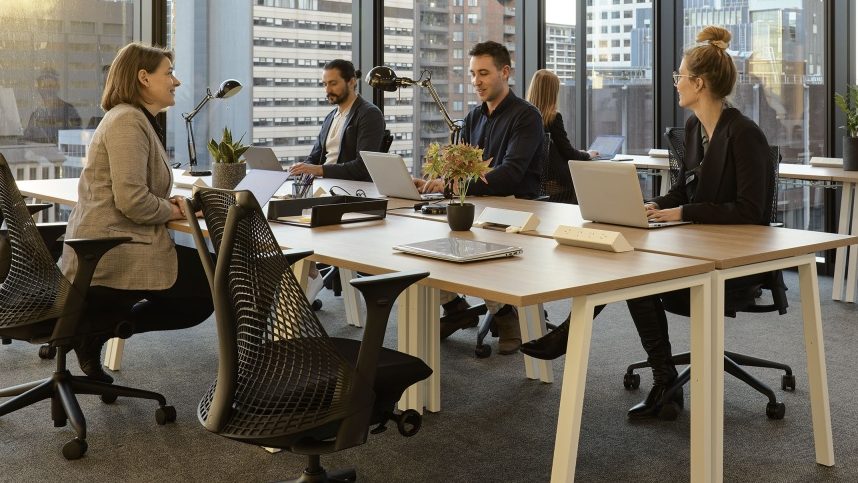
Demand for co-working spaces has surged in the wake of COVID. Offices that once sat empty are now coming to life again with vacancy rates dropping by 5.2 per cent in the first three months of this year.
Further figures from online flex space platform Rubberdesk reveal prices of leasing a co-working space have dropped slightly by 0.2 per cent to $608 per person, per month.
Businesses dealing with pandemic-induced changes are now entering co-working spaces, namely because these spaces offer shorter lease terms than commercial offices, said Jim Groves, co-founder of Rubberdesk.
“I think what we’re seeing is a new breed of tenants coming to the market, who have been in traditional leased offices and their leases are coming to an end or came to an end during the pandemic,” he said.
“They are in a period of flux where their business has evolved or is changing, and their requirements for space are changing so they’re looking for flexible office space to solve that problem. Their business may be going through a period of uncertainty and they aren’t sure what the requirements are for returning workforce, so the advantage of flex is the term is one year in duration.”
Sydney is the most expensive city to lease a co-working space at $667 per person, per month, followed by Melbourne at $631, Western Australian at $600, South Australia at $567, Queensland at $557 and the ACT at $489.

Co-working spaces are picking up new tenants. Photo: Getty Images.
The March 2022 Australian Flexible Office Space Report also shows while some co-working spaces closed because of the impacts of COVID, many were due to open this year and into 2023.
In Melbourne, Creative Cubes opens in Carlton with plans to expand into Collingwood, Hub Australia opens in St Kilda with plans for a new Richmond location, and Spaces and The Commons opened in Collingwood.
In Sydney, WorkClub opened at 200 George Street, The Commons will open two new centres and The Executive Centre will open a new centre at Angel Place.
The challenge for co-working operators will be to serve up amenities that make it worthwhile for workers to commute from the comfort of their home offices, said Groves.
“We need to justify why we are asking them to travel now,” he said.
“Yes, there’s the collaboration and getting people to together and being more productive, but we also need to put them somewhere where they feel valued and they can flourish.
“So availability of breakout spaces where you can go and have a chat with a colleague, the ability to step out and have a private conversation. Those are the things you enjoy at home, which you don’t really want to sacrifice by going into the office.”
Brad Krauskopf, chief executive and founder of Hub Australia, is a co-chair of the fledgling industry body Flexible Workspace Australia. The six-month-old association has approximately 60 members representing more than 200 co-working locations.
He said most operators will spend this year building back their tenancies, but will struggle to keep up with demand next year.
“We will see there will be much more demand than supply from 2023 onwards because of the changing nature of demand and more companies looking to have flex workspace as part of their solution to support hybrid working,” he said.
“People are recovering their occupancies at the moment. Already at the moment there’s not enough supply in fringe and suburban areas and that’s something that Hub’s going to be concentrating on.”
Hub Australia run 12 co-working locations and a further six in the cities and suburbs of Sydney and Melbourne under development.